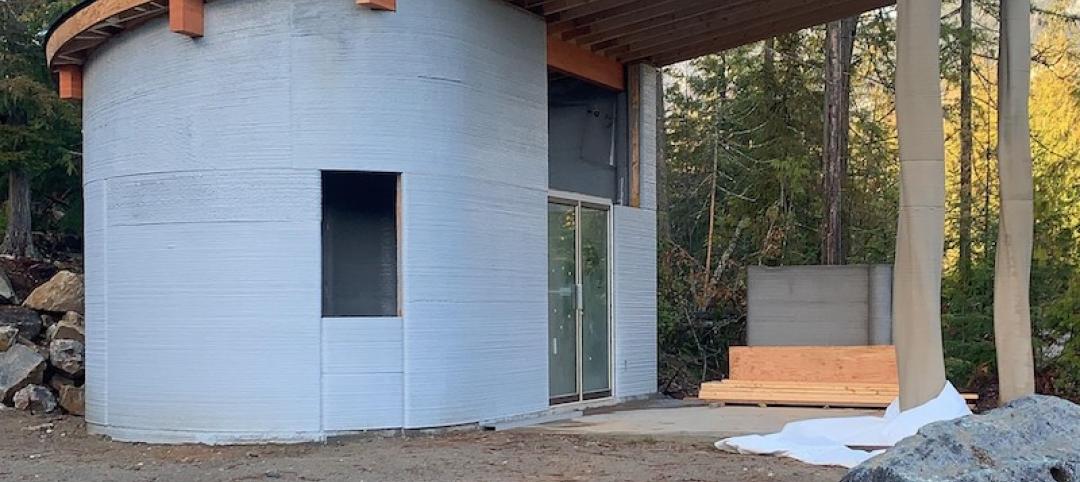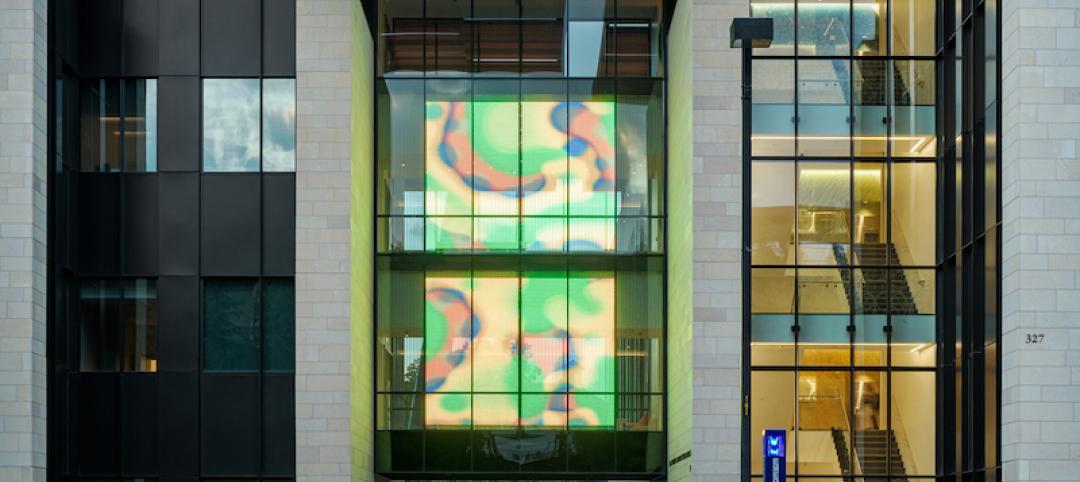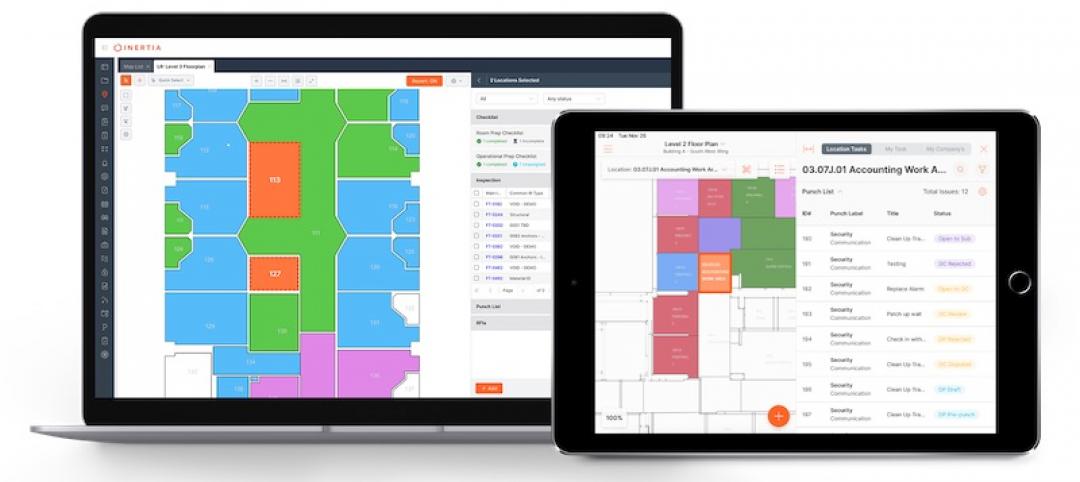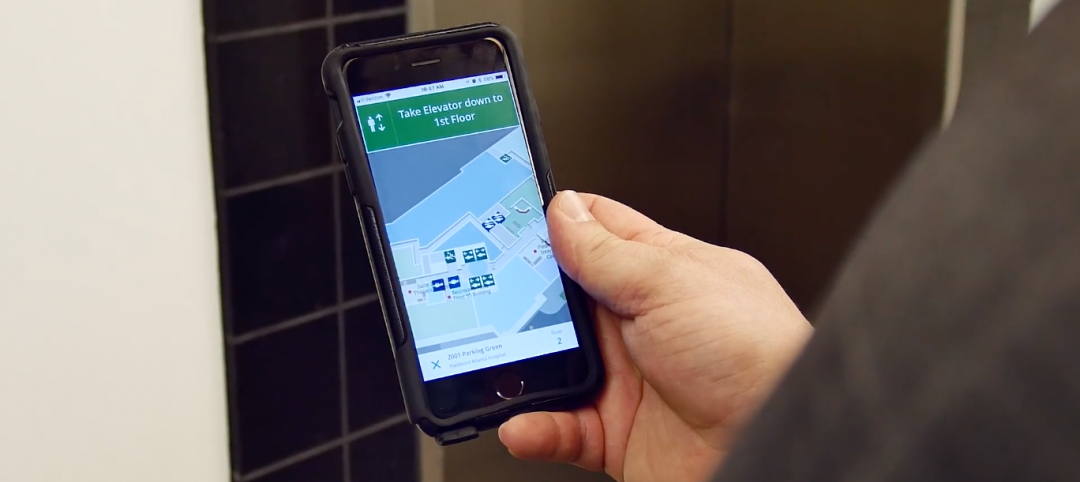
Hospitals are energy gluttons. With 24/7/365 operating schedules and stringent requirements for air quality in ORs and other clinical areas, an acute-care hospital will gobble up about twice the energy per square foot of, say, a commercial office building.
It is an achievement worth noting, therefore, when a major hospital achieves LEED Platinum status, especially when that hospital attains 14 of a possible 17 points for Energy & Atmosphere and 11 of 15 for Indoor Environment Quality.
Kudos, therefore, to Dell Children's Medical Center of Central Texas, a 169-bed, 503,000-sf children's hospital and trauma center in Austin, which gained the coveted top spot in green certification (under LEED-NC 2.1) in early 2009, making it the first LEED Platinum hospital in the U.S.
Phil Risner, PE, LEED AP, the owner's project manager and building systems network engineer, said LEED Platinum was the hospital's goal from the outset because “being green” would have “real, positive effects on both the environment and our healthcare delivery capability.”

Wishing is one thing; executing is another. How the Building Team tackled the difficult energy and IEQ problems of such a facility may provide valuable instruction to AEC professionals facing similarly complex situations.
“We had three guiding principles,” recalls Joseph F. Kuspan, AIA, SVP and design director at Karlsberger, the Columbus, Ohio, firm that did the master plan and design for Dell Children's. “One, don't do dumb things to get LEED points. Two, anything less than a 12% return on investment is dumb. And three, we had to know if we were being dumb.” That is, before rejecting any strategy—roof-mounted wind turbines, for example—the team had to weigh it seriously to see whether or not it was truly viable.
A boon from Austin Energy
Dell Children's sits on 32 acres within a 700-acre brownfield redevelopment site that was once home to Austin's municipal airport. To provide power to the new facility, the local utility, Austin Energy, built an $18 million combined cooling/heating power (CCHP) plant. This increased the energy efficiency of the primary fuel conversion for the project from roughly 29% in a conventional power service model, to 75% efficiency.
The CCHP also saved $6.8 million in capital costs that would have gone to boilers, emergency generators, cooling towers, chillers, and the space necessary to house them. The bulk of the savings, $5.8 million, was plowed back into energy-conservation measures and other LEED initiatives.
Equally important to the sustainability of the project was its use of courtyards, which not only opened up the building massing (and played nicely into the project's pace-setting daylighting strategy), but also led to an interesting approach to the hospital's air handling units.

“The owner wanted the AHUs to be in enclosed spaces, not on the roof,” to simplify maintenance and extend their life expectancy, says Kuspan. Instead of doing the usual 10% space gross-up for the mechanical system, the designers put the air handling units in 2,000-sf “rooms” distributed across 15 locations. “We stacked those rooms and put five heat recovery rooms on the roof, because we didn't want to lose that 70° air on a 100° day in Texas,” he says. “That allowed some of the floors below to use that 70° air.”
Each “stack” of AHU rooms was also right-sized to meet the needs of the hospital department it served. One stack might serve a cardio OR, where the room temperature has to be jacked up from 60°F to 90°F in a matter of minutes following surgery, while another stack might serve administrative offices, where the room temperature would be fairly constant.
This innovation produced further benefits and cost savings, says Kuspan. It allowed for shorter duct runs, which enabled the Building Team to overscale the ducts to reduce air velocity and noise. “That kind of background noise can be a stress factor for patients, families, and staff in a hospital setting,” says Kuspan. The designers were also able to reduce the size of fan motors, thereby saving on initial cost as well as operating expenses.
The project's glazing also had to be fine-tuned to achieve a delicate balance between achieving energy savings in the hot Texas sun and not distorting the view to the outdoors. “The grid that was established in the [master] plan was on a 37-degree angle, which was great for some things but tough for sun control,” says Kuspan. Seton Healthcare Network wanted to avoid any hint of a “techy” look on the exterior; therefore, no applied exterior shading devices, no sunshades, no vertical blades, and definitely no motorized systems.
The team solve this problem by using high-efficiency, double-e coated glass high up on the walls and clearer glass, with low-level coatings, in what Kuspan calls “the sweet spot” from three to seven feet above the floor, where greater transparency was called for.
Perhaps the most commendable aspect of Dell Children's, though, is what the Building Team and hospital board didn't do. They stuck to their principles and didn't go overboard to look super-green. Design elements that could have added LEED EA or IEQ points but failed the “don't do anything dumb” rule or fell below 12% ROI didn't make the cut—things like active photovoltaics, roof-mounted wind turbines, vegetative roofs, natural ventilation in the lobby, charging stations for electric vehicles, and a biofuel fueling station for fleet vehicles.
Many other non-energy-related design elements were also scratched, things like denim wall insulation, waterless urinals, an on-site tertiary water treatment plant, pervious pavement and bioswales in the parking lot, a 500,000-gallon rainwater cistern, and recycled gypsum board. All were struck from the program, even though they might have added LEED points.
In some cases, otherwise popular sustainable design elements were ruled out by the owner. For example, interior light shelves were vetoed by the hospital because they were seen as dust collectors and a potential infection control threat. Even without light shelves, however, the Building Team was able to use the open spaces in the courtyards to daylight more than 80% of occupied administrative and nonclinical spaces. Perhaps more remarkable was their ability to get daylight into 35% of diagnostic and treatment areas. By using the LEED “alternative compliance path,” the project was able to earn the first LEED point for daylighting by a hospital.
Of course, not everything worked as planned. Motion sensors were used extensively to control lighting use, but this went a bit too far when the motion sensors in the on-call room kept turning the lights on every time the residents rolled over in their sleep. These motion sensors were quickly removed. Seton Healthcare's Risner and his staff also had to do a lot of fine-tuning to optimize all the mechanical systems.
By sticking to their guiding principles, however, the owner and the Building Team were able to produce a BMW project at a KIA price. “A lot of people think we must have had an $800 per square foot budget, that's just not true,” says Kuspan. The construction cost was somewhere between $280/sf and $305/sf, depending on whether the $18 million for the cogeneration plant is included in the calculation.
“That's not an exorbitant cost per square foot for a project like this,” says Kuspan. Not when you get the kinds of bragging rights Dell Children's Medical Center has earned.
Related Stories
3D Printing | Nov 27, 2020
The Fibonacci House: A test case of 3D construction printing
The Fibonacci House, which we have named after Leonardo Fibonacci, the medieval Italian mathematician, illustrates the potential of 3DCP and demonstrates how a complex design and challenging logistics can be solved through pragmatic planning and 3DCP technology.
University Buildings | Nov 25, 2020
Stanford bioresearch quad's new public art piece, “Morphogenesis”
Stanford University's Morphogenesis installation connects user interaction with a large-scale media mesh platform.
Smart Buildings | Nov 20, 2020
The Weekly show: SPIRE smart building rating system, and pickleball court design tips
The November 19 episode of BD+C's The Weekly is available for viewing on demand.
Smart Buildings | Oct 1, 2020
Smart buildings stand on good data
The coming disruption of owning and operating a building and how to stay ahead through BIM.
Building Technology | Jun 29, 2020
Location intelligence distinguishes new SaaS offering
Inertia Platform provides a visual and map-centric approach to jobsite management and Building Team collaboration.
Multifamily Housing | Apr 23, 2020
Tankless water heaters: 12 things to know about these energy savers for multifamily housing
Twelve factors to consider in using tankless water heaters in multifamily housing.
Coronavirus | Apr 21, 2020
COVID-19 update: CallisonRTKL, Patriot, PODS, and USACE collaborate on repurposed containers for ACFs
CallisonRTKL and PODS collaborate on repurposed containers for ACFs
Coronavirus | Apr 10, 2020
COVID-19: Converting existing hospitals, hotels, convention centers, and other alternate care sites for coronavirus patients
COVID-19: Converting existing unused or underused hospitals, hotels, convention centers, and other alternate care sites for coronavirus patients
Healthcare Facilities | Mar 9, 2020
Mobile wayfinding platform helps patients, visitors navigate convoluted health campuses
Gozio Health uses a robot to roam hospital campuses to capture data and create detailed maps of the building spaces and campus.
University Buildings | Mar 9, 2020
Auburn University, Robins & Morton open Construction Field Laboratory
Robins & Morton and Auburn University’s College of Architecture, Design and Construction (CADC) recently celebrated the dedication of the Robins & Morton Construction Field Laboratory.















